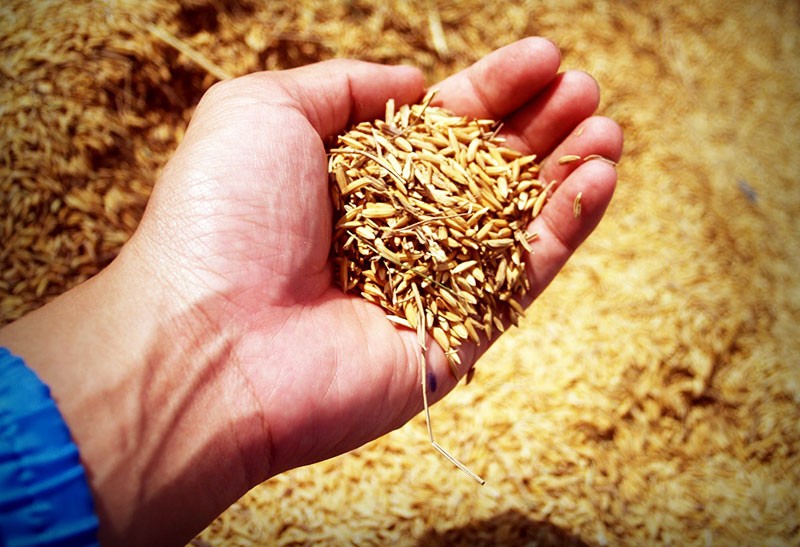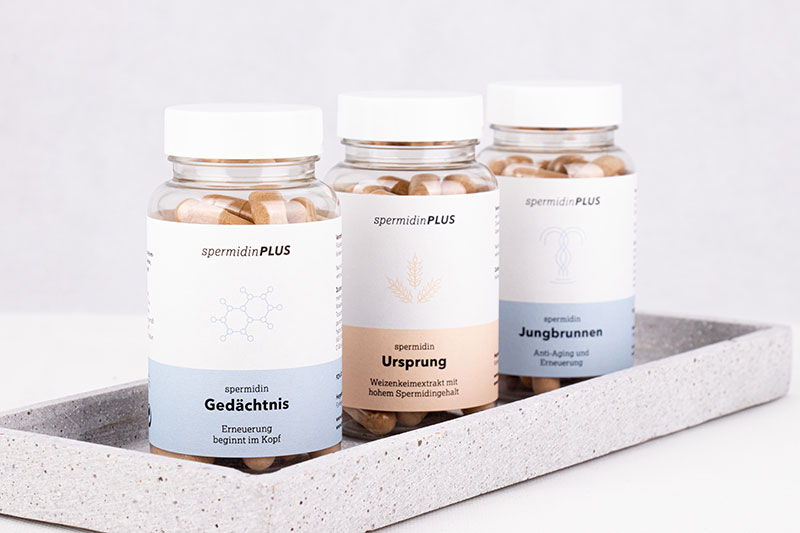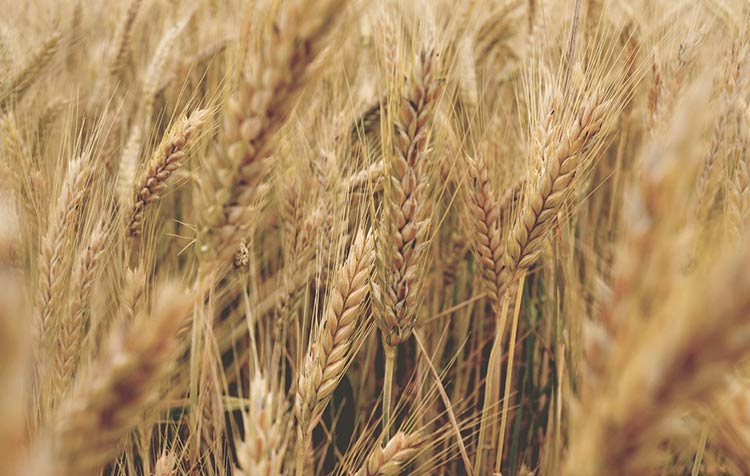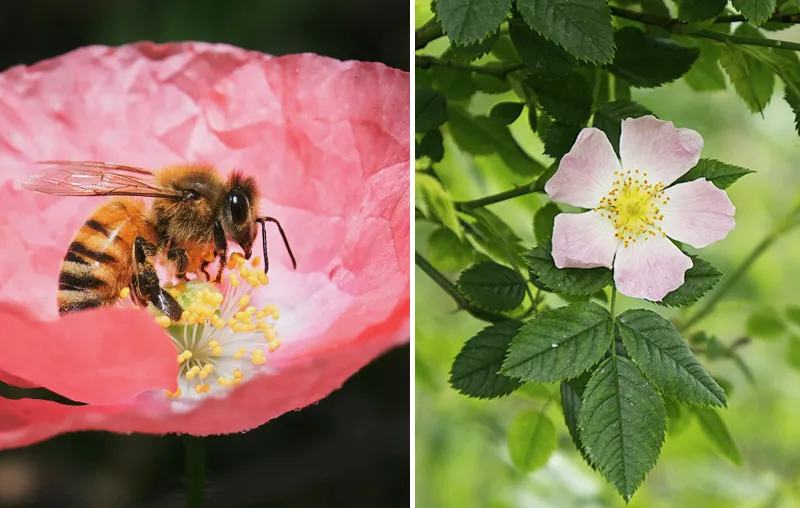What is spermidine? One thing in advance: it is on everyone's lips, but it is nothing naughty! Even though the active ingredient is found in high concentrations seminal fluids, it is also found in food and other products. Spermidine is currently especially popular as an anti-aging agent, which is why more and more people are interested in the active ingredient and why more and more scientists are studying it.
In this article you will learn everything you need to know about spermidine - from the definition, to the effect and corresponding studies, to the products that contain the active ingredient.
What is spermidine?
Spermidine (or monoaminopropylputrescine) is a component of all living organisms and is quite crucial for cell growth. As we age, the spermidine content in our body cells gradually reduces. This is another reason why we age. But spermidine is one of the few substances that stimulate autophagy - that is the self-cleaning process of the cells in the body. This means: our body cells basically rejuvenate themselves through the active ingredient.₁
Health effects and applications of spermidine
In the meantime, many research groups have studied the effect of spermidine in our body. Several (long-term) studies have shown the active ingredient to have an life-prolonging effect certified. In this context, the connection with the body's own processes was established again and again, in which our body separates itself from components that are no longer needed, which are then recycled and stimulate the metabolism of the respective cell. This is the process which, as already mentioned, is called autophagy - and which also takes place quite comparably in the bodies of animals.
Spermidine acts in the following Application areas:
- Diabetes type 2
- Liver Cancer & Cirrhosis
- Cardiovascular system
- Weight loss
- Anti-aging effect
- Dementia
- …
So far, no side effects have been reported. On the contrary: since corona viruses, for example, inhibit the cell cleansing promoted by spermidine, a higher intake of the active ingredient may even help to prevent viruses from spreading as quickly.₂
Tip: I have given you under Corona - conclusions for the future wrote an article about what we should all learn from this virus.
Spermidine studies
If you want to know more about the scientific research and background, these studies on the active ingredient spermidine will help you:
- Spermidine in health and disease, F. Madeo, T. Eisenberg, F. Pietrocola, G. Kroemer, January 26, 2018.
- Higher spermidine intake is linked to lower mortality: Prospective population-based study, S. Kiechl, R. Pechlaner, P. Willeit, et al, June 28, 2018.
- Cardioprotection and lifespan extension by the natural polyamine spermidine, T. Eisenberg, M. Abdellatif, F. Madeo, November 14, 2016.
- Polyamines in foods: development of a food database., M. A. Ali, Karolinska Institutet, January 14, 2011.
- Analysis of SARS-CoV-2-controlled autophagy reveals spermidine, MK-2206, and niclosamide as putative antiviral therapeutics., C. Drosten, N. C. Gassen, Jan Papies, et al, April 2020.
Do you know of any other conclusive studies on the active ingredient spermidine? Then feel free to write me a comment.
Products with spermidine

Now we know a lot about the substance itself and how it works in our body. But how can we absorb spermidine? The answer is: mainly through our food! Here I give you now a suitable list at hand and also show you what alternative is still available to you.
Food with spermidine
On average, we humans take about 7 to 15 mg spermidine per day through our diet. If you eat more of it, you can keep the spermidine content in your own body cells at a high level even during the aging process.₃ The active ingredient is hidden primarily in whole grain products and products based on wheat germ. But you can also find it in cheese, legumes, mushrooms or soy products. As promised at the beginning of this article, here is a detailed list of foods containing spermidine₄:
- Wheat germ (raw, 243 mg/kg)
- Soybeans (207 mg/kg (Japan) and 128 mg/kg (Germany))
- Cheddar cheese (raw, 199 mg/kg)
- Pumpkin seeds (104 mg/kg)
- Mushrooms (89 mg/kg)
- Rice bran (50 mg/kg)
- Peas (46 mg/kg)
- Mango (raw, 30 mg/kg)
- Chickpeas (29 mg/kg, see also Chickpeas healthy)
- Cauliflower (25 mg/kg)
- Broccoli (25 mg/kg)
- …
The list is almost endless. But also through industrially processed products, such as for example this wheat germ oil*, you can supply your body with spermidine.
Can you think of any other products with spermidine? Then write me, as always, happy to comment below the post.
Spermidine capsules

As previously announced, there is another way to ingest spermidine: as a Food supplements in Kapselform. Aufgrund seiner verjüngenden Wirkung ist die Nachfrage nach dem Wirkstoff Spermidin im Laufe der Jahre extrem gestiegen. Dementsprechend gibt es auch einige schwarze Schafe auf dem Markt.
Spermidine - The anti-aging active ingredient of the future?
If science has its way, spermidine is definitely beneficial for the autophagy process in our body. This means that we age more slowly. Spermidine therefore acts like a fountain of youth for our body - and should become a very conscious part of our diet.
What do you think of the active ingredient? And have you already had experience with the capsules? Then feel free to write me a comment.
Stay healthy,

PS: Gesundheit ist das Wichtigste im Leben. Neben Spermidin kann auch der regular stay in nature help you stay fit and healthy for as long as possible. In the linked article you will learn why this is so.
References:
₁ N. Horchler (2018): Not only in sperm: Spermidine keeps you young, say researchers, available at https://kurier.at/leben/nicht-nur-im-sperma-spermidin-haelt-jung-sagen-forscher/400060289 [14.05.2020].
₂ A. Flöel (2020): Spermidine - New Hope at Corona?, available at https://www.apotheken-umschau.de/Coronavirus/Spermidin-Neuer-Hoffnungstraeger-bei-Corona-558501.html. [14.05.2020].
₃ J. Wild (2019): Eternally young thanks to spermidine?, available at https://www.netdoktor.at/magazin/spermidin-7597351 [14.05.2020].
₄ R. Strömberg, A. Yngve, E. Poortvliet; et al. (2011): Polyamines in foods - development of a food database, available at https://www.ncbi.nlm.nih.gov/pubmed/21249159?dopt=Abstract. [14.05.2020].






